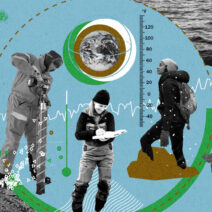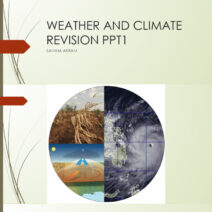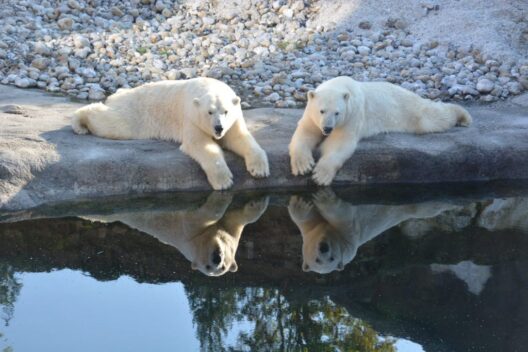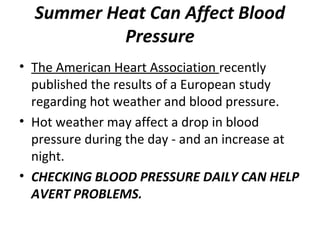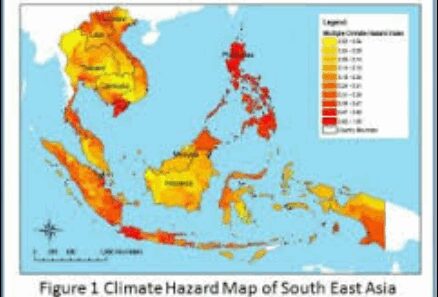The distinction between climate and weather is often muddled in common discourse, akin to the contrast between a quick snapshot and an elaborate mural. Weather is fleeting, ephemeral, a single brushstroke across the canvas of the atmosphere. In contrast, climate is the comprehensive tableau, an assemblage of weather patterns that delineates the broader narrative of a region over extended periods. Understanding this distinction is not merely academic; it has profound implications for environmental policy, personal lifestyles, and global strategy.
At first glance, one might perceive weather as the dramatic lie of the land: the sweltering heat of a July afternoon, torrential downpours that sudden arise from nondescript clouds, or the sheer chill of winter’s grip. Weather is what you experience day-to-day, a capricious friend whose temperament changes with alarming rapidity. When discussing weather, one might refer to the temperature on a specific day, the precipitation forecast for the week, or the severity of an impending storm. For instance, a location may experience a “heatwave,” a temporary surge in temperatures that shatters historical records over a few days. This phenomenon represents an anecdotal advent of weather’s whims, as it may lead to immediate disruptions but does not in itself define broader climatic trends.
Conversely, climate serves as the enduring narrative underpinning the atmospheric conditions of a specific area. It is analogous to an epic saga, meticulously crafted and delineated over decades and centuries. When one speaks of climate, they refer to the long-term averages and variations in temperature, humidity, atmospheric pressure, wind, rainfall, and other meteorological elements within a given region over an extended timeframe — typically defined as thirty years or more. The climate of a tropical region, for instance, is characterized by its warm temperatures, high humidity, and frequent precipitation, painting a consistent picture influenced by geographical factors and global atmospheric patterns.
To illustrate the interplay between these two concepts, consider the phrase “Global Warming.” While the reference speaks to a climatic shift that is producing discernible alterations in long-term weather patterns, the specific weather event of an exceptionally hot day becomes merely an anecdotal remark within the larger narrative of climate change. On any given summer day, a sudden surge in heat can lead to overwhelming heat advisories, yet within the larger context of climate change, we observe that such weather events align with a trend indicating a warming planet. These increasingly frequent weather anomalies serve as a warning, compelling society to ponder the repercussions of a climate out of equilibrium.
Delving further into the distinctions, the effects of climate change offer a magnifying glass onto the relationship between weather and climate. As the climate shifts, the expectations of local weather can alter dramatically. For example, regions that historically embraced moderate winters may encounter unprecedented snowstorms and frigid temperatures, mainly due to shifting jet stream patterns. These extreme weather conditions become exemplars, showcasing how transient atmospheric phenomena arise from more systemic climatic alterations. As such, the variables intertwined in the complex tapestry of climate change yield data that necessitates urgent attention from policymakers, researchers, and citizens alike.
Consider the impact of urbanization as another layer in this intricate equation. Cities, with their expansive asphalt jungles and towering edifices, can amplify local weather phenomena, leading to the urban heat island effect. This localized heating manifests as a distinct divergence in weather patterns when contrasting urban weather against rural outsides. Such discrepancies elucidate how the climate may remain stable over generations, yet the spatial variances in weather oftentimes tell a different story, illustrating the intricate dance between human actions and atmospheric responses.
Moreover, the transition between seasons epitomizes the tug-of-war between weather and climate. Spring may herald the blossoming of flora, showcasing the weather’s transient beauty, yet the gradual shift in climatic norms dramatically influences which plant species thrive and how ecosystems adapt. The apparent fragility of these systems underscores the thought that while weather channels our immediate experiences of the environment, climate acts as the subtle script that dictates the longevity and diversity of our planetary tapestry.
In conclusion, recognizing the delineation between climate and weather is essential for grasping the comprehensive narrative of our planet’s environmental health. Weather may present the immediacy of our surroundings, a vivid moment framed against the backdrop of our lives. However, climate serves as the guidepost, a definitive compass charting our connection with the Earth over time. To advocate for authentic change in environmental policy, education, and individual habits, we must reconcile these two dimensions, emphasizing the understanding that each instance of weather is not merely an isolated event but rather a brush stroke in the much larger painting of our planet’s climatic story.
As the urgency surrounding climate change intensifies, the need for clarity in discourse becomes paramount. Knowledge empowers action; thus, systemic education on these concepts plays a critical role in fostering a collective responsibility toward a sustainable future. The canvas is ours to amend — may we choose to paint wisely.
